When it comes to serving up alcoholic drinks for the summer, it’s all about refreshing and fruity flavours served long and chilled
The unpredictability of the Great British Summer means that impulse and convenience stores are often the first places shoppers go when the sun comes out unexpectedly. Two-thirds of convenience retailers experience a 10% increase in their wine and spirit sales during the summer months, and a further 27% of retailers see a rise of 20% or more (Retail Inner Cirkle Results, Wave 1, March 2017).
This isn’t surprising considering that the total BBQ, alfresco eating and entertainment market is now worth more than £7.1bn (Nationalbbqweek.co.uk).
Rav Garcha, who owns five Nisa stores in the West Midlands, says al fresco dining has become really popular in recent years. “People are spending more and more time in their gardens and are investing in making their gardens more comfortable and welcoming places to entertain guests,” he says.
Malcolm Crump, of Spar Compton, Wolverhampton, says: “Shoppers’ behaviours definitely change in the summer when it comes to buying alcohol. They buy more of it in general and they become more casual in the way they buy and drink it – if the sun comes out they’ll buy some bottles of cider on a very impromptu basis.”
Cider
Cider is a key category during the summer months, with BBQs and other food-led occasions presenting shoppers with an opportunity to trade-up to more premium flavoured ciders.
Malcolm adds: “Fruity ciders are the big craze at the moment. We get a lot of younger adults coming in to buy these, whereas we hardly sell any cider through the winter.”
David Charman, owner of Spar Parkfoot, West Malling, Kent, says it’s surprising the transformation that shopping behaviours take when the sun comes out.
“If you had taken a picture of our cider fixture at the end of the day on the first hot Sunday of the year (April 7), you would have seen it had been obliterated. It was just extraordinary; we sold 20 times more cider on that day than we ever have before,” David asserts.
Strongbow maintains its category-leading position, with Strongbow Dark Fruit becoming the second biggest cider product in the off-trade (Nielsen MAT w/e 28 January 2017), in terms of value.
Retailers report that they see fruity ciders grow in popularity during the summer months. David adds: “Drinks with interesting flavour combinations seem to become more popular as people want to try something a bit more interesting and fruity just in those warmer months.”
The top five fruity ciders are: Strongbow Dark Fruit in a can; Kopparberg mixed fruit; Kopparberg strawberry & lime; Bulmers red berries & lime; and Rekorderlig strawberry & lime (Westons Cider Report 2017).
Beer
However, while total cider is worth more than £341m in the impulse channel (Nielsen MAT w/e 11 March 2017), total beer is worth more than £1.1bn (Nielsen MAT w/e 25 February 17). David and Malcolm both agree it’s a close call between beer and cider when it comes to popularity in the summer as consumers will generally tend to buy beer in larger quantities.
Malcolm points out it’s a given that when there’s a sports match on, especially football, the main drink to stock up on is beer.
Heineken’s premium lager brand Sol now comes in a larger 650ml bottle alongside a four-pack of new ‘sleek’ 330ml cans.
Toby Lancaster, category and shopper marketing director at Heineken, says: “This format is perfect for promoting throughout the BBQ season, with both new packs having been developed to target a wide range of with-food and at-home drinking occasions. The taller format of the new sleek can stands out on shelf, giving an edge at point of purchase with the aim of appealing to females, as well as more trend-conscious shoppers looking for a stylish brand to take to a BBQ.”
While it’s clear that beer and cider get a great uplift in sales in the summer thanks to the increase in get-togethers, millennial consumers are also more promiscuous in the way they shop the alcohol aisle. For example, a millennial consumer might choose to drink cider at a BBQ, beer while watching a football match, wine when with their partner, and cocktails to celebrate an event with family (Westons Cider Report 2017).
Wine
Pernod Ricard UK says white wine, rosé and prosecco can be real footfall drivers during the warmer months.
For Harry Goraya, of Rosherville Post Office, Kent, fruity wine is a popular drink in the summer. “Two big sellers in the summer are cider and fruity wines. Generally, it is always women who come in to buy fruity wines. Sometimes we get men in saying ‘She’s asked me to get a bottle of wine, but I have no idea which one’.
“The popular brands which come to mind are the Echo Falls summer berries and the new Gallo Spritz fruity flavours.”
Amy Giacobbi, marketing manager at Continental Wine & Food (CWF), anticipates that a key trend in wine this summer will be drinking less, but drinking better, as exchange and duty rates push prices up and make the £5-£6 price point increasingly difficult for retailers to hit.
Pernod Ricard UK says sales of premium wines and spirits for the ‘time for me and us’ occasion accounted for £977m over the past five years, and more than two-thirds involve people consuming at the weekend (PRUK/Brand Potential Shopper Research 2016).
Jai Singh has noticed shoppers “living for the weekend”, meaning they’re avoiding drink during the week, but are prepared to treat themselves to more premium drinks at the weekends.
“Premium wines are in growth. It shows that people are willing to spend that bit more for good-quality drinks.
“I think people are starting to live for the weekend more as the market has become more unstable and people know 2017 is going to be tough. They aren’t drinking throughout the week, but they are willing to spend more at the weekend.”
Makulu marketing manager Helen Dakin says a key growth sector is the flavoured wine category– now worth almost £50m and growing fast. Dakin says: “I think many in the trade are still surprised by the growth of flavoured wine here, but it’s done a great job in introducing wine to a younger audience and essentially bringing innovation to the category. We recently launched Makulu Pomula – a sparkling blend of rosé with pomegranate and marula flavours. This has a light taste and an ABV of 5.5%, ideal for sipping and relaxing at a summer BBQ.”
Malcolm says it’s a similar story with both cider and rosé wine in that he barely sells any in the winter, then in the summer “all the mothers” come in to buy rosé.
And this desire for light-tasting, premium wines could help explain the huge growth in sparkling wine sales, which have increased by 80% in the past five (HM Revenue and Customs figures).
Prosecco continues to enjoy double-digit growth of 10%, although this has slowed from 39% 12 months ago. Last summer saw an 8.5% growth in alcohol sales across the summer months with prosecco growing 36% (Kantar World Panel 2016) over the same period – making it the star summer performer of last year.
David Charman says he now stocks four different types of prosecco, whereas two years ago he only had one.
Low- and no-alcohol
David also points out that the desire for lighter drinks can even lead to people choosing low- and no-alcohol drinks. “We are seeing a bit of a steer towards the lower-alcohol SKUs of flavoured wines now, such as the Gallo fruity wines. It makes sense that if people are drinking throughout the day in their garden they may not want their drink to be so strong.”
Andrew Turner, director of wine for Eisberg alcohol-free wine, says: “With the trend of moderation and abstinence continuing to rise, and one-third of Britons saying that they’ve cut down on how much alcohol they consume in the past 12 months (Mintel 52 weeks to November 2016), any seasonal lines should include alcohol-free alternatives, giving shoppers the choice and variation that they expect.
“People choosing to go alcohol-free, whatever the reason, don’t want to feel excluded from the occasion, especially during the summer months when people are socialising more.”
Alcohol-free wine has seen an increase of 39% value (Nielsen 52 weeks to 10 September 2016) and Eisberg is leading the way with 53% market share (Nielsen 52 weeks to 29 January 2017).
Adds Turner: “Alcohol-free wines provide a more grown-up and low-calorie choice for non-drinkers. We’ve tapped into the growth of sparkling as a destination category, with the launch of our sparkling blanc and rosé – the perfect summer celebration alternative. With only 33 and 31 calories per 125ml serving respectively and no more than 0.05% alcohol, it provides the fizz and flavour, simply without the alcohol.”
For beer drinkers, newly-launched Heineken 0.0 is the best-tasting no-alcohol lager on the market, according to consumer taste tests (Davis McKerr Qualitative Research June 2016). It contains 69 calories per bottle and is made with natural ingredients.
Also new for 2017 is Merrydown Crisp Apple cider, which has a lower ABV than the original variant, at 5.5%, delivering a drier, lighter flavour profile. It contains 30% fewer calories, no artificial colours or flavours and no added sugar as it is sweetened with apple juice.
Spirits
As well as in wines, Jai has noticed the premiumisation trend taking hold within the spirits category.
He says: “We are constantly revamping our spirits range and have just brought in some more premium lines. I’ve noticed groups of younger adults will often buy a premium bottle between them to share if they have a night planned – either for drinking before going out, or if there’s a football or boxing match on TV.
“Someone asked me for some caramel vodka so I’ve got in some Salted Caramel Oddka. I’ve also got Monkey Shoulder whisky, Belvedere vodka in stock, and Skull vodka, which comes in a skull-shaped bottle and retails at about £50.
“Parfetts allows me to buy by the bottle as opposed to a whole case just so I can try it out and see how well it sells, making it easier for me to try out different SKUs.”
Absolut is now the number one premium vodka and the number one flavoured vodka in the UK (Nielsen, Grocery Multiples, MAT to 31 December 2016).
Malcolm points out the general trend for gin works particularly well in the summer. “When it comes to spirits, the biggest seller in the summer months is gin. This is a really on-trend spirit at the moment anyway as it’s used in lots of fancy cocktails, but it also makes a refreshing long drink on hot days because you mix it with plenty of ice and tonic.
“We’ve started stocking a larger variety of premium gins, which are going well.”
Consumer interest in citrus cocktails is set to be the next big thing, according to suppliers. More than 82% of consumers regularly drink citrus cocktails (CGA Mixed Drinks Report April 2016), which Absolut says has led to the launch of Absolut Lime vodka.
Diageo Reserve’s ultra-premium vodka, Cîroc, has introduced its first limited-edition expression, Cîroc Summer Colada, to its portfolio. Inspired by the popular summer cocktail Piña Colada, the new limited-edition expression has been made using natural pineapple and coconut flavours, delivering what its makers say is a taste of coconut cream and a juicy tropical fruity note that carries through into a long, smooth finish.
Cîroc Summer Colada will launch to the UK on- and off-trade accompanied by two recommended perfect serves, Cîroc Colada and Summer Colada Sunrise.
Also on the coconut theme, Pernod Ricard UK believes Malibu will be a huge winner for retailers during the summer months, along with Havana Club. Key event spikes such as Malibu’s National Piña Colada Weekender and the Havana Club summer cocktail campaign are aimed at recruiting young adults this season.
Pernod Ricard UK suggests that retailers host their own Piña Colada Day in-store to entice consumers looking for inspiration around summer serves.
RTDs
Consumers are continually looking for products to help make their busy lives as convenient as possible, according to James Middleton, impulse channel director at Pernod Ricard UK. He says this makes the ready-to-drink (RTD) can category a trend that is worth tapping into. The sector is rapidly growing (up 14%, PRUK/Brand Potential Shopper Research 2016) and is currently worth more than £95m (Nielsen, Grocery Multiples, MAT to 31 December 2016).
Jameson, the UK’s number one Irish whiskey (Nielsen Scantrack total off trade 31 December 2016), has introduced a new RTD to make the most of this trend. Ideal as a convenient way to enjoy whiskey on the go, the RTD cans can be consumed during outdoor seasonal occasions such as festivals and at-home BBQs with friends. The cans are available in two flavours: classic cola; and ginger & lime.
Foster’s kicks off summer campaign
Foster’s is celebrating its Australian heritage with a new TV ad.
Set in Melbourne in 1888, the ‘Thirstiest Men on Earth’ sees a dramatised version of the brand’s founders rescuing English cricketers with the ultimate in refreshment as they succumb to the searing heat during a match with the Australian squad.
The ad is a gentle nod to the brand’s sponsorship with the England and Wales Cricket Board as the ‘Official Lager of England Cricket’.
It kicks off a multi-million-pound campaign across the summer to include digital and social platforms, television and cinema.
Heineken beer brand director Ifeoma Dozie says: “Foster’s has genuine heritage and we are excited to bring the pioneering founders, William and Ralph Foster, to life in this new campaign. They revolutionised the way beer was served – and ice-cold amber nectar is still enjoyed by millions of drinkers every year.”
Merchandising
The UK consumer is more interested than ever in adding twists and fusions to at-home dining occasions and this extends to summer alcohol, according to Makulu. Dakin advises c-store retailers to merchandise their alcohol in a way which will drive incremental purchases of items such as fresh fruit, mixers, spices and fresh deli items.
Retailers can also encourage shoppers to create cocktails at home through creative cross-promotions. Makulu has developed a range of easy-build sangria-style summer cocktails that can be created at home, which it is showcasing on its website.
James Middleton at Pernod Ricard UK says retailers should utilise off-shelf displays and use chiller space for premium wines such as Brancott Estate, which is the second best-performing New Zealand wine brand (Nielsen total off-trade 31 December 2016). That way, it will be chilled and ready to go for shoppers looking for the ‘something for tonight’ occasion – which will be increasingly important during summer, with consumers looking to socialise in the evenings.
WKD’s time to shine
Amanda Grabham, head of brand marketing for alcohol at SHS Drinks, whose portfolio includes WKD, says summer is the time when WKD shines.
“Alcohol RTDs sell pretty steadily all year round, but like most long alcohol drinks RTD sales do increase when the sun shines and the temperature rises, due largely to people seeking refreshment and socialising more at events such as BBQs. During particularly hot sunny weeks, for example, WKD sales increase by about 30%.
“RTDs are still very much part of young adults’ summer drinks repertoire, and that’s because fruity alcoholic drinks are as popular as ever among 18- to 24-year-olds, who are the key consumers of alcohol RTDs. We just need to ensure that these brands re-engage and re-connect with young consumers’ lifestyles and that’s what we will be focusing WKD activity on this summer.”
Following the relaunch of WKD in the autumn, the brand is being supported by a ‘WKD for the Now’ campaign anchored on social platforms and spanning mobile phones.
SHS Drinks is also developing a series of signature summer cocktails for each of the four variants.
“Additionally, be sure to include RTD ranges within the chiller, such as Jameson’s new convenient cans, to attract consumers looking to grab and go and quickly enjoy the summer sun,” Middleton adds.
Rav Garcha aims to provide an inspirational offer to grab the attention of his shoppers and boost basket spend. “I’ve been trying to convince suppliers of alcohol to supply me with ice buckets so that I can sell their product with that,” he explains.
“We sell a lot of ice in the summer, for obvious reasons, and I’m certain buckets would go down well. A retailer friend tested the idea and took a plant pot, stuck ice in it and used it as an ice bucket and asked his friends what they’d pay for that and they said that they’d happily pay £10.
“Coors did make a 18-pack box where the box turned into an ice bucket, which was a good idea, but because it was an 18-pack it was on the pricey side and so I don’t think it sold as many as it would have done if it were a 12-pack.”
SHS Drinks says it’s important to stock a mix of pack formats to cater for different occasions – 700ml bottles are preferred for sharing occasions when consumers are getting together and having a drink before they go out for the evening, and they are also ideal for making RTD cocktails, while four-packs tend to be purchased for sharing at parties, or events such as barbecues.
Manny Patel says the formats that people like to buy change drastically in the summer. “Exactly which drinks and formats sell depends on the weather and what sporting events are on. If people are buying to drink while watching the football we tend to sell lots of packs of bottled beer, whereas generally we sell a lot of cans.
“When it is warmer and people are holding more garden parties, we sell more wine and more alcohol in general.”
Rav says pack formats can make a huge difference to the way the consumer views a product. “We sell Kopparberg in single bottles and we always had a deal of two bottles for £4, which seemed like a good deal, but when customers wanted to buy four bottles it would cost them £8 and that suddenly seems really steep! So we’ve now got the four-pack of Kopparberg and a 10-can pack which are a better price, and they’re easier for people to carry to barbecues or garden parties.
“People do seem to like to buy bigger packs in the summer when they have more opportunities to have get-togethers and garden parties.”
Smirnoff adds to cider portfolio with new flavour
Smirnoff is extending its Smirnoff Cider offering with a new mandarin & pink grapefruit variant.
Available now, the new flavour builds on the successful launch of the passionfruit & lime and raspberry & pomegranate SKUs in June 2016, which contributed 20% to the total growth in flavoured cider. The new addition to the range is set to further maximise sales in a category currently growing at 35.4% per year.
Setting its sights on opening up the cider category to a variety of new occasions, including festivals and out of home, Diageo is also introducing the existing passionfruit & lime and raspberry & pomegranate variants in a 330ml can multipack.
Katie Hunter, innovation commercialisation manager at Diageo GB, says: “Our new Smirnoff Cider flavour aims to drive excitement and growth into the flourishing fruit cider category, with a refreshingly citrusy flavoured cider which is less sweet and more lightly carbonated than similar products on the market.
“In addition, the new can formats will make the range an even more compelling offering for retailers, enabling them to unlock the full potential of the cider category.”
Smirnoff Cider mandarin & pink grapefruit is available to retailers in cases of 8x500ml bottles, with an rrp of £2.19 each.
Multipacks in cans (rrp £10) are available for the existing passionfruit & lime and raspberry & pomegranate SKUs, each containing 10x330ml cans.
Chilled
More than half (55%) of alcohol shoppers consume their purchases within two hours of purchase (Star Retailer 2016), so it’s important to ensure the chiller is well stocked.
“We’ve got quite a bit of fridge space so we are able to put our multipacks of beer in the fridges, which helps boost sales during the warm months when people are looking to consume them cold within the next few hours,” says Harry.
“We even have a back-up chiller out the back which allows us to store packs of 24 in the chiller. Customers know that all they need to do is ask us for a pack and we’ll get it for them. This really helps us to sell larger packs as people will often buy a larger pack if they can get it chilled as it provides them with better value for money.”
Linda Williams, of Broadway Convenience Store in Edinburgh, gets plenty of sales of white and rosé wine and fruity ciders during the summer as she puts a lot of effort into ensuring shoppers know that, unlike the local supermarket, all those products are chilled in her store.
“This weekend just gone was quite warm and we sold a lot of chilled white and rosé wine. We advertise the fact that all these drinks are chilled through our leaflets and on Facebook. I’ve recently created our own Facebook video for each department in the store and I’ll put up each video at different times. Videos are much more likely to catch the shopper’s eye than text or a still image.
“We will continue to highlight the chilled alcohol throughout the summer, especially on the hotter days.”
It’s clear that there’s a market for just about any alcoholic beverage during the summertime as consumers’ tastes become more versatile and more adventurous. The key to appealing to as many of these tastes as possible is refrigeration, and fruity and refreshing flavours. Inspire shoppers with plenty of chilled choice, ice, sharing formats, and POS which shouts “perfect refreshing serve”.
Merrydown shapes up for summer
Summer is the season of bottled cider, according to Amanda Grabham, head of brand marketing at SHS Drinks.
She says: “Last summer saw a significant surge in glass bottled cider sales in the impulse sector, with the average weekly sales volume between June and August being 50% higher than average weekly sales during the other nine months of the year (Nielsen Scantrack 12 weeks to 10 September 2016).”
SHS Drinks points out that heritage cider value sales have grown by 19% (Nielsen Scantrack 25 March 2017) over the past year and apple is the only flavour sector to have grown in impulse stores in the past year.
The company is currently rolling out its new Merrydown Crisp Apple and relaunching its 7.5% ABV Merrydown Vintage Medium Cider, renaming it as Merrydown Original Vintage Apple Cider. A new bottle design will align it with the appearance of the Merrydown Crisp Apple packaging.
Both are 750ml, making them ideal for sharing and giving them a point of difference over most other bottled ciders which are sold in 500ml bottles, Grabham says. They are available in 6- and 12-bottle shrinkwrapped trays.




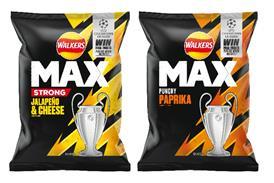
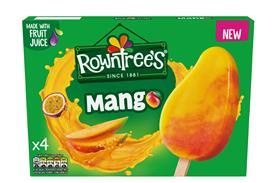


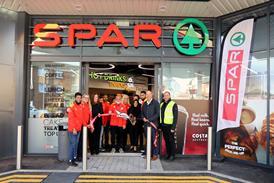







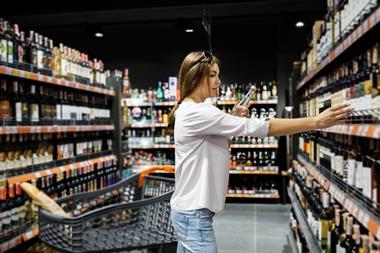

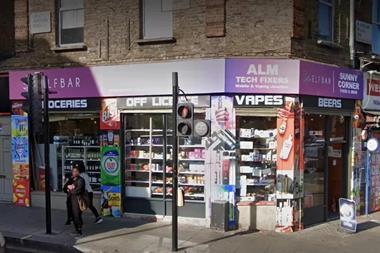
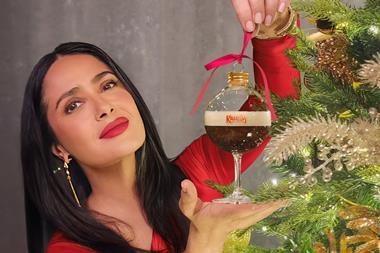
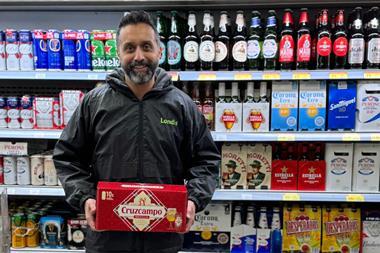

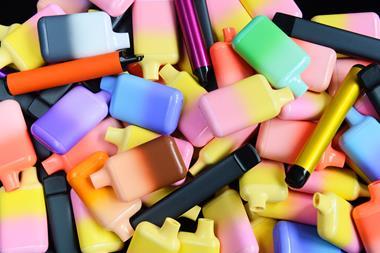





No comments yet